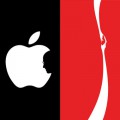In a nutshell: Your brand is the promise you make to customers. Make it memorable and responsive.
Apple is more than just an iPhone. Harley-Davidson is more than a motorcycle. Starbucks is more than a mermaid and a latte. These companies have transcended their logos and products to become true brands, powerful enough to evoke strong feelings and a sense of attachment in the minds of consumers.
The best brands do not happen by accident. They are carefully cultivated, planned and controlled. With a strong brand, even something as simple as a logo change might have a profound impact on the customers who have come to associate it with a company and its products. Think about the outcry that would occur if Nike tried to change its logo from something other than a swoosh — people have an emotional connection to the symbol.
There’s no shortage of information about building brands: The topic has been the subject of many books and scholarly articles. The following four guidelines will help you develop, manage or redevelop your company’s brand.
Here are four tips that will help you build or enhance your company’s brand:
It’s All About the Benefits
Think about your brand as the promise you make to your consumers. To do this, you need to explain clearly what people will gain from using your product or service, but not necessarily how it works. For example, a new feature on Apple’s high-end iPhones allows people to take advanced portrait-style photos with a blurred background, an effect that was previously limited to expensive single-lens reflex cameras. Apple’s advertising smartly doesn’t talk about the technology that makes this effect possible. Instead, it shows how easy it is to use and the quality of photos taken with it. Apple is not focusing on attributes, but benefits.
When you promote your product or service, always ask what’s in it for the consumers. With certain types of products, such as high-end vehicles, people will always be interested in some of the specifications — such as what type of engine powers their new Lexus or Tesla. However, it’s not effective to only focus on features. Companies must also explain that the engine makes the vehicle faster, smoother, more responsive, more efficient, and so on.
Talk with Your Customers, not To Them
Marketing used to be a one-way street. Companies could talk to customers, but it was difficult for these groups to communicate back except through individual phone calls, emails or letters. Today, with the advent of social media, companies are expected to be engaged in a real-time dialogue with buyers and the general public. The risks are greater in this environment, as one disgruntled customer can receive a lot of exposure on Twitter or Facebook.
If you don’t talk with your customers, who will? The immediacy and impact of social media is a real risk to brand-building companies. Failure to create a dialogue means there’s a very good chance that someone else can shape public perception about your brand. Don’t let a few malcontents and bad reviews destroy the goodwill you’re building with customers.
Have a Laser-Like Focus
Small businesses tend to overreach in their branding efforts. Ask them who they want to reach, and they’ll often respond with a very broad answer, such as “Millennials,” or “Women.” Such a wide target is hard to pin down, as they encompass a lot of groups with different characteristics, needs, demographics and communication preferences. Instead, adopt a beachhead strategy and tailor your brand at first to a single, tightly focused group. Think about the four marketing Ps for this group — the product, place, promotion and price. Once you’ve established yourself in one target market, it’s easy to expand to others.
Remember, don’t have to be all things to all people.
Tell a Story
Walt Disney started with a mouse. Hewlett-Packard was born in a one-car garage. What’s your origin story?
Today, it’s not enough to think about your organization in terms of business-to-business (B2B) or business-to-consumer (B2C). You’re really in the P2P business — that is, person-to-person. Your brand should strive to create emotional connections with customers.
Build your brand around a compelling story about who you are how your company was started. These are the details that connect with customers, and create a memorable impression.






